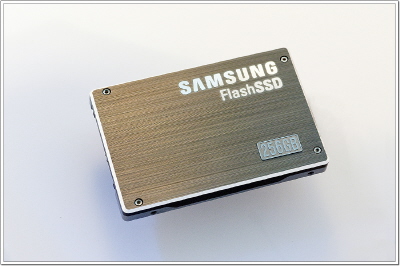Solid State Drives: Samsung may accelerate adoption just in time for Xmas

Will you have a notebook with a solid state drive on your holiday wish list? Samsung Electronics on Monday unveiled a 2.5-inch, 256 GB solid state drive (SSD) that's the thinnest with a SATA II interface. In English, Samsung just made flash-based drives a lot more appealing.

And if the early reaction (salivation, buckled knees etc.) holds, Samsung may make SSD-based notebooks a hot item. Samsung said new solid state drive has a sequential read speed of 200 MB per second and a write speed of 160 MB per second. The drive, which uses multi-level cell architecture, is roughly 2.4 times faster than the typical hard drive, according to Samsung.
Meanwhile, the Samsung SSD is 9.5 millimeters thick. The drive will be the highest capacity SSD on the market. Needless to say, Samsung is hoping that its breakthrough will boost adoption. Memory players such as Micron Technology, which competes with Samsung, are looking to SSDs to diversify their businesses. Jim Elliott, VP of memory marketing at Samsung, said in a statement:
With development of the 256GB SSD, the notebook PC is on the brink of a second stage of evolution. This change is comparable to the evolution from the Sony Walkman to NAND memory-based MP3 players, representing an initial step in the shift to thinner, smaller SSD-based notebooks with significantly improved performance and more than ample storage.
That's pretty optimistic given that current notebooks with SSDs have disappointed. But the initial reaction to Samsung's latest SSD is glowingly positive and with a power consumption of 0.9 watts it could be attractive.
Also see: